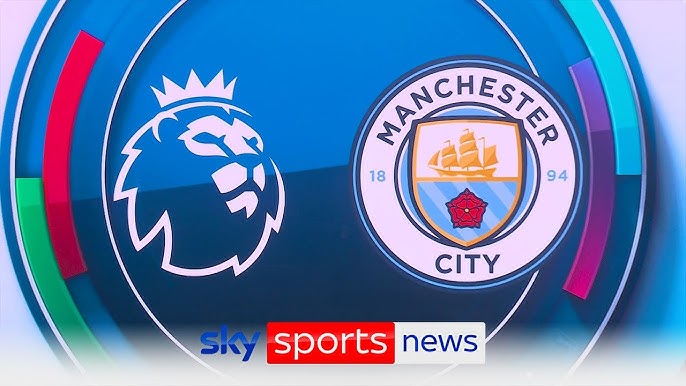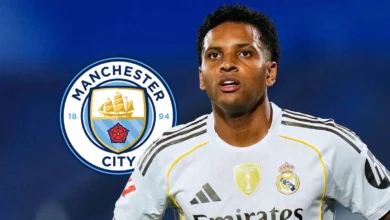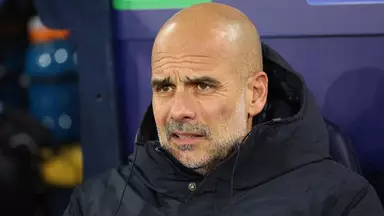Four more Man City players who need a loan after defender seals move

The pathway from Manchester City’s academy to the first team has always been a challenging one, with the club’s relentless pursuit of excellence at the highest level often leaving little room for inexperienced youngsters to develop alongside world-class talents. However, the loan system has emerged as a crucial bridge between youth football and professional success, offering promising players the opportunity to gain invaluable experience while maintaining their connection to the Etihad Stadium.
The Finley Burns Blueprint: A Model for Success
The recent loan move of defender Finley Burns to Reading for the 2025/26 campaign serves as a perfect example of how Manchester City’s youth development strategy continues to evolve. Burns, who spent the previous season at Hull City in the Championship, will now ply his trade in League One, where he’s expected to play a pivotal role in Reading’s promotion ambitions.
The 20-year-old centre-back’s journey exemplifies the modern approach to player development. Rather than languishing in reserve teams or struggling for minutes in an overcrowded first-team setup, Burns has been given the opportunity to test himself against seasoned professionals in competitive environments. His time at Hull provided him with crucial Championship experience, and now the move to Reading represents another calculated step in his development.
Burns’ progression highlights the importance of finding the right level for young players. While the Championship offered him exposure to a higher standard of football, the step down to League One with Reading could provide him with more consistent playing time and the chance to develop leadership qualities that will serve him well in his future career. The move also demonstrates Manchester City’s commitment to ensuring their young players are not just technically proficient but also mentally robust and tactically aware.
Jadel Katongo: Rebuilding After Setbacks
Perhaps no player better illustrates both the promise and the challenges of loan moves than defender Jadel Katongo. The 20-year-old’s story is one of spectacular early success followed by frustrating setbacks, making his need for another loan move all the more crucial.
Katongo’s breakthrough season with Peterborough United in 2023/24 was nothing short of remarkable. His performances were so impressive that they prompted club chairman Darragh MacAnthony to make a bold prediction about his future potential. “Let’s talk about Jadel Katongo, Man City, been fantastic with us, by the way,” MacAnthony said. “He’s probably going to be worth £100 million in two, three years’ time.”
Such hyperbolic praise might seem excessive, but it reflected the genuine impact Katongo made during his initial loan spell. His combination of pace, defensive awareness, and ability to contribute in attacking phases made him a standout performer in League One. The young defender demonstrated the kind of versatility and adaptability that Manchester City values in their players, showing he could excel in multiple positions and tactical systems.
However, football development is rarely linear, and Katongo’s return to Peterborough the following season served as a stark reminder of this reality. Injuries disrupted his momentum, limiting his appearances and preventing him from building on his previous success. The physical demands of professional football, combined with the psychological pressure of living up to elevated expectations, created a perfect storm that derailed his progress.
This setback, while disappointing, is not uncommon in football development. Many players who eventually reach the highest levels experience similar challenges during their formative years. The key lies in how they respond to adversity and whether they can rediscover their form and confidence.
For Katongo, another loan move represents an opportunity to reset and rebuild. The experience of dealing with injury and disappointment will have taught him valuable lessons about resilience and mental fortitude. A carefully chosen loan destination could provide him with the platform to demonstrate that his initial success was no fluke and that he possesses the character to overcome setbacks.
The challenge for Manchester City’s development staff will be finding the right environment for Katongo’s next move. He needs a club where he can play regularly, regain his confidence, and continue developing his game without the added pressure of unrealistic expectations. The focus should be on steady improvement rather than spectacular breakthroughs.
Mahamadou Susoho: The Midfielder’s Resilience
The story of midfielder Mahamadou Susoho offers a different perspective on the loan experience, demonstrating how young players can turn adversity into opportunity. Like Katongo, Susoho’s season at Peterborough was significantly impacted by injury, with a serious problem sidelining him for the first half of the campaign.
However, Susoho’s response to this setback showcased the mental strength and determination that Manchester City looks for in their young players. Rather than allowing the injury to derail his development, he used the enforced break to study the game more intensely, working on his tactical understanding and physical conditioning.
When he returned to action in the second half of the season, Susoho demonstrated remarkable resilience and adaptability. His performances improved significantly, and he became a valuable asset to Peterborough’s team. The experience of fighting back from injury taught him important lessons about patience, persistence, and the value of hard work.
Susoho’s position as a midfielder adds another dimension to his development needs. Unlike defenders or forwards, midfielders must possess a unique combination of technical ability, tactical awareness, and physical presence. They need to understand the game from multiple perspectives, capable of both creating and destroying play as circumstances demand.
The experience at Peterborough provided Susoho with invaluable insights into the demands of professional midfield play. He learned how to cope with the physical intensity of League One football while maintaining his technical standards. More importantly, he developed the mental resilience necessary to perform consistently at a high level.
For his next loan move, Susoho would benefit from a step up in level, possibly to the Championship or a strong League One side with promotion ambitions. The key will be finding a club that plays a style of football that complements his strengths while challenging him to improve his weaknesses.
Tom Galvez: The International Experience
The journey of left-back Tom Galvez represents perhaps the most ambitious approach to player development in Manchester City’s loan system. His move to LASK in Austria demonstrated the club’s willingness to explore international opportunities for their young players, recognizing that different football cultures can offer unique developmental benefits.
Galvez’s initial move to Austria was bold and ambitious, reflecting Manchester City’s global perspective on player development. The Austrian Bundesliga offered him exposure to a different style of play, with greater emphasis on technical ability and tactical sophistication compared to the more physical approach often seen in English football.
However, the transition proved more challenging than anticipated. While Galvez did make appearances for LASK, he struggled to establish himself as a regular starter. The cultural adjustment, combined with the demands of adapting to a new tactical system and language, created obstacles that impacted his development.
The decision to move him to Dutch second division side Cambuur in January represented a pragmatic adjustment to his development plan. The Netherlands has long been recognized as an excellent environment for young players to develop, with its emphasis on technical ability, tactical awareness, and possession-based football aligning closely with Manchester City’s playing philosophy.
At Cambuur, Galvez found a more suitable environment for his development. The Dutch approach to football education, with its focus on individual skill development and tactical understanding, provided him with the tools to improve his game significantly. The move also allowed him to gain valuable experience in a competitive league while building his confidence.
For Galvez’s next loan move, the focus should be on finding a club that can help him take the next step in his development. Having gained experience in both Austrian and Dutch football, he now has a broader understanding of different tactical approaches and playing styles. This international experience could prove invaluable as he continues his development.
The Broader Context: Manchester City’s Development Philosophy
The loan moves of these four players reflect Manchester City’s broader philosophy toward youth development. The club recognizes that the modern game demands players who are not just technically proficient but also tactically intelligent, mentally resilient, and capable of adapting to different environments and challenges.
This approach represents a significant evolution from traditional youth development models. Rather than keeping young players in reserve teams or youth competitions, Manchester City actively seeks out challenging environments where their prospects can test themselves against seasoned professionals. This philosophy recognizes that real development occurs when players are pushed outside their comfort zones and forced to adapt to new challenges.
The club’s global network and resources allow them to identify opportunities that might not be available to other clubs. The willingness to send players to different countries and leagues demonstrates a sophisticated understanding of how different football cultures can contribute to player development.
However, this approach also requires careful management and monitoring. Each player’s development journey is unique, and what works for one individual may not be suitable for another. The club’s coaching staff must carefully assess each player’s needs, strengths, and areas for improvement before determining the most appropriate loan destination.
The Challenges of Modern Player Development
The stories of these four players also highlight some of the challenges facing modern player development. The increasing competitiveness of professional football means that opportunities for young players are becoming scarcer, even at lower levels. Clubs are under pressure to achieve immediate results, making them less willing to take risks on inexperienced players.
Injuries represent another significant challenge, as demonstrated by the experiences of both Katongo and Susoho. The physical demands of professional football can be particularly challenging for young players whose bodies are still developing. The psychological impact of injury can be just as significant as the physical effects, potentially derailing a player’s development if not properly managed.
The mental aspects of player development are increasingly recognized as crucial to success. Young players must learn to cope with pressure, disappointment, and the constant scrutiny that comes with professional football. The loan system provides valuable opportunities for players to develop these mental skills in competitive environments.
The Role of the Loan System in Modern Football
The loan system has evolved significantly in recent years, becoming an integral part of player development strategies across European football. For clubs like Manchester City, with their extensive youth programs and high standards for first-team selection, loans provide a crucial bridge between academy football and professional success.
The system allows clubs to maintain control over their young players’ development while providing them with the regular playing time and competitive experience they need to progress. It also enables clubs to assess their players’ potential more accurately, observing how they perform in different environments and against varied opposition.
However, the loan system also presents challenges. Players must adapt quickly to new environments, teammates, and tactical systems. The temporary nature of loan moves can sometimes prevent players from fully settling into their new clubs, potentially limiting their development opportunities.
Looking Forward: The Future of Youth Development
The experiences of Burns, Katongo, Susoho, and Galvez provide valuable insights into the future of youth development at Manchester City and similar clubs. The success of these loan moves will likely influence the club’s approach to developing future generations of players.
The emphasis on international experience, demonstrated by Galvez’s moves to Austria and the Netherlands, suggests that Manchester City recognizes the value of exposing young players to different football cultures. This global approach to development could become increasingly important as football becomes more international and clubs seek to develop players who can adapt to different tactical systems and playing styles.
The importance of mental resilience, highlighted by the injury setbacks experienced by Katongo and Susoho, will likely lead to increased focus on psychological support and mental health resources for young players. The ability to bounce back from disappointment and maintain focus during challenging periods is crucial for long-term success.
Conclusion: The Ongoing Evolution of Player Development
The loan moves of these four Manchester City players represent more than just temporary transfers; they symbolize the club’s commitment to comprehensive player development and its recognition that success in modern football requires more than just technical ability.
Each player’s journey offers unique insights into the challenges and opportunities of modern player development. From Burns’ progression through different levels of competition to Katongo’s resilience in the face of setbacks, from Susoho’s comeback from injury to Galvez’s international experience, these stories illustrate the complexity and diversity of pathways to professional success.
The loan system, while not perfect, provides valuable opportunities for young players to develop their skills, gain experience, and build the mental fortitude necessary for success at the highest levels. For Manchester City, these moves represent strategic investments in the future, recognizing that today’s loan players could become tomorrow’s first-team stars.
As football continues to evolve, so too will the approaches to player development. The experiences of these four players will undoubtedly inform Manchester City’s future strategies, helping to refine and improve their youth development programs. The ultimate goal remains the same: producing players capable of competing at the highest level while embodying the values and playing philosophy that define Manchester City as a club.
The success of these loan moves will be measured not just in immediate performance but in the long-term development of well-rounded professionals capable of making meaningful contributions to the game. In this context, each loan move represents a crucial step on the journey toward that ultimate goal.














